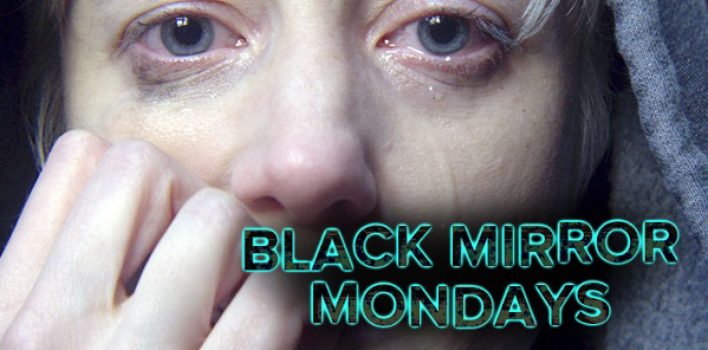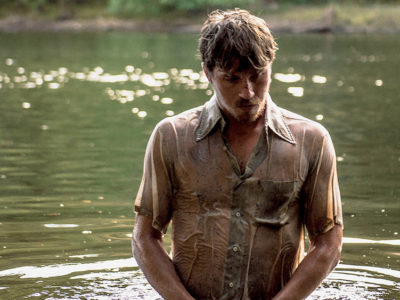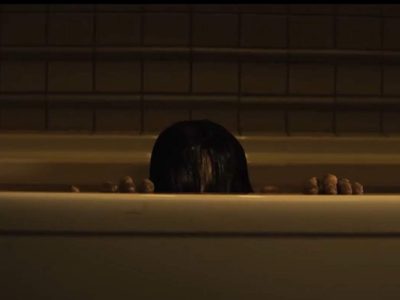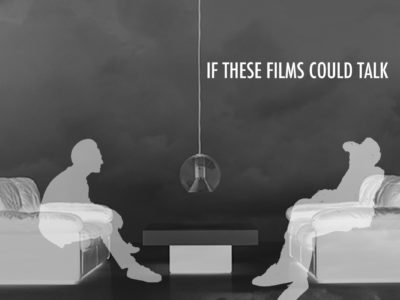Black Mirror S4E3: Crocodile
Our memories are incredibly important to us. Memories help us to live, and are with us from before we’re even born to the day we die. They remind us of things that once were and gives us good indication of what’s to come, directly affecting our lifespan. All of our personal and shared experiences from the past are stored not only in our own memories, but in the memories of those who were with us while we were making memories. While memories don’t define us, they create stories or images that are, in essence, crowd-sourced. Anyone that has told a story in a group setting where more than one person shared the same experience knows this, as those who recall the story interject details which the original storyteller neglected to mention. What’s important to remember for one person may not be important for the next, and because of this, memories are rarely – if ever – 100 percent objective truth.
Our memories also point to our brokenness and fallibility. While storing memories is the responsibility of our minds, sometimes our minds fail us. Sometimes we can’t properly recall what we need to know. Sometimes we remember something we didn’t even know we logged away in our memory banks. And sometimes we remember things at the strangest times in the most random places. If you combine our fallible minds with our deceitful and sick hearts, our memories are, at best, quite fickle.
This is illustrated uncomfortably well in Black Mirror’s episode Crocodile, directed by John Hillcoat. The story follows a woman named Mia (portrayed by Andrea Riseborough), who is a brilliant architect and is described by someone off-camera as “not just an architect of buildings, but communities.” The road to become this character, however, was not without significant bumps. Fifteen years earlier, Mia was in the passenger’s seat when her drunken then-boyfriend, Rob, hit and killed a cyclist with his car on a lonely mountain road. In a crazed state, Rob convinced Mia to help him destroy the evidence by dumping the cyclist’s body – along with the rest of the evidence – off of a cliff into a lake.
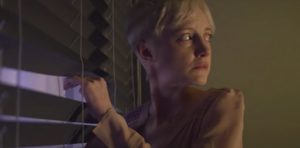 However, as time marches on, our past sins tend to haunt us more and more if not properly confessed. This is the case with Rob, as he visits Mia at her hotel during a business trip and informs her that he intends to write an anonymous letter to the widowed bride of the man he killed, telling her the truth about what happened. Mia fears that the letter may be traced and she will be outed as well, ruining what life she has made for herself. As their emotions peak, Mia kills Rob in her hotel room, and as she collects herself she looks out her window and witnesses a man get hit by an automated pizza delivery van on the street outside her hotel.
However, as time marches on, our past sins tend to haunt us more and more if not properly confessed. This is the case with Rob, as he visits Mia at her hotel during a business trip and informs her that he intends to write an anonymous letter to the widowed bride of the man he killed, telling her the truth about what happened. Mia fears that the letter may be traced and she will be outed as well, ruining what life she has made for herself. As their emotions peak, Mia kills Rob in her hotel room, and as she collects herself she looks out her window and witnesses a man get hit by an automated pizza delivery van on the street outside her hotel.
The pizza van incident quickly becomes the center of an insurance investigation. Shazia Akhand is the investigator who picks up the case (portrayed by Kiran Sonia Sawar), and she interviews both the victim and witnesses to the event with the help of a piece of technology called a Recaller. Once a wireless computer chip is placed on the side of one’s temple, the Recaller scans the memories of the individual, simultaneously displaying them on a monitor while recording them on a hard drive. These recordings are called “engrams” and are usually very subjective and emotional. To put their minds at ease, Shazia informs those who are being recorded by the Recaller that the more emotional a response to a memory is, the more the memory is vivid, and therefore reliable. Shazia uses things such as familiar smells and sounds from the incident’s surroundings to help boost a person’s ability to recall the event, making the memory more accurate. Interviewees are also assured that these recordings are sealed and private unless they indicate you’re harming yourself or another person.
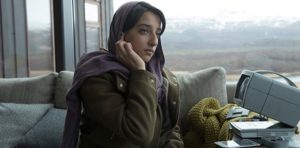 As Shazia is interviewing the witnesses, it’s important to note that she uses memories from other witnesses to essentially edit the memories currently being recorded. For instance, with the memory of a dentist who saw the aftermath of the incident outside his window, Shazia suggests that a woman’s coat was yellow instead of the color that the dentist described it. That detail was true, but as soon as she corrected the man, the coat’s color on the engram instantly changed to yellow. In a move that Shazia seemed oblivious to, the changing of the coat’s color showed the dentist’s lack of trust in his own memory, and that he was willing to let somebody else – somebody who wasn’t even there at the incident – tell the story for him. I can only dream of how this technology, if placed in dishonest hands, could change the course of history in mere seconds by just a single suggestion.
As Shazia is interviewing the witnesses, it’s important to note that she uses memories from other witnesses to essentially edit the memories currently being recorded. For instance, with the memory of a dentist who saw the aftermath of the incident outside his window, Shazia suggests that a woman’s coat was yellow instead of the color that the dentist described it. That detail was true, but as soon as she corrected the man, the coat’s color on the engram instantly changed to yellow. In a move that Shazia seemed oblivious to, the changing of the coat’s color showed the dentist’s lack of trust in his own memory, and that he was willing to let somebody else – somebody who wasn’t even there at the incident – tell the story for him. I can only dream of how this technology, if placed in dishonest hands, could change the course of history in mere seconds by just a single suggestion.
Shazia eventually finds a witness who appeared to have seen the entire incident – Mia. When Shazia arrives at Mia’s home for the interview, Mia doesn’t let her in at first, obviously uneasy with the idea of talking about the night that she killed someone. But Shazia does eventually persuade Mia to let her in, not letting her know at first that she has a Recaller. When Mia learns what the Recaller does, she excuses herself to the restroom to briefly focus her mind on certain events that happened that night that didn’t relate to the murder she committed. But as we know, the most emotional memories are usually the most vivid. Once Mia’s memories are loaded into the Recaller, Shazia gets the footage she needs, but also gets more than she ever bargained for – a subconscious confession of Rob’s murder.
Mia knows from the look on Shazia’s face that she saw the murder, and legally, Shazia must report what she has seen. What comes next is a sickening dramatization of what lengths a person will go to keep a dark secret. Mia eventually kills Shazia, but not until after she hooks the Recaller to Shazia to discover if she told anyone that she was visiting Mia or that Mia was a part of the investigation. Only one person showed up on the Recaller – Shazia’s husband – and Mia drives to Shazia’s home and kills him. She then amps her murderous spree up to eleven when she kills Shazia’s baby son as well, all to make sure there wasn’t a chance of anyone remembering what Mia looked like should they be hooked up to a Recaller as she was.
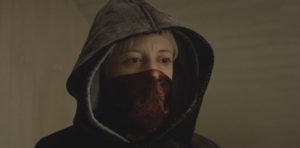 However, humans are not the only creatures who can develop memories. In a particularly providential moment after Crocodile’s horrific climax, police detectives are at the Akhand residence surveying the scene of the crime and they find one detail that Mia overlooked – a guinea pig who was given to Shazia just a day or so earlier. The guinea pig’s cage was in the baby’s room and it had full view of the crime as it took place. The police are then shown hooking the guinea pig up to the Recaller, therefore nominating this small, overlooked animal as a MVP candidate of Black Mirror: Season 4.
However, humans are not the only creatures who can develop memories. In a particularly providential moment after Crocodile’s horrific climax, police detectives are at the Akhand residence surveying the scene of the crime and they find one detail that Mia overlooked – a guinea pig who was given to Shazia just a day or so earlier. The guinea pig’s cage was in the baby’s room and it had full view of the crime as it took place. The police are then shown hooking the guinea pig up to the Recaller, therefore nominating this small, overlooked animal as a MVP candidate of Black Mirror: Season 4.
It’s interesting how the little details consistently escape us. The guinea pig reveal was effective because it relied upon our own faulty memories regarding the first scene we see Shazia and her husband together, when he gives Shazia the guinea pig as a birthday gift. In the midst of all of Crocodile’s tension, most audiences would forget about “Codger” the guinea pig similar to how most witnesses would forget the color of a jacket or how fast a vehicle was moving in a tense situation. It’s refreshing to know that God understands this negative trait of ours and how it can affect us. God often suggests that we use actions or symbols to remember things. For instance, God used a rainbow to help Noah remember His covenant He made with the whole earth, and that He would never again destroy it with a flood. At the Last Supper, Jesus used a meal to help us recall His commandment to remember Him whenever we eat, using two symbols of the Passover and giving them new meaning as a way to help us remember His sacrifice.
Crocodile closes out with the police closing in on Mia as she attends her son’s school play – a production of Bugsy Malone. We see Mia brushing away tears, not unlike the tears we saw fall down her face after she disposed of Rob, or when she was watching Shazia’s memories before she killed her, or even after she left the Akhand residence in ruins. But with a woman like Mia, who willingly commits one violent act after another to cover up her sins, the term “crocodile tears” does come to mind.
But we need not be defined by our past sins or our darkest memories. As Christians we know it’s possible to overcome them instead of perpetuating the sin cycle like Mia did. Mia, a woman who was once billed as an “architect of communities” but instead chose to destroy lives rather than continue building them up. In a haunting gesture, the final scene of Crocodile makes this plea to the audience through Bugsy Malone’s final track, “You Give a Little Love” –
“We could have been anything that we wanted to be
And it’s not too late to change
It’s been decided to give it some thought
Maybe you’ll agree we really ought”


